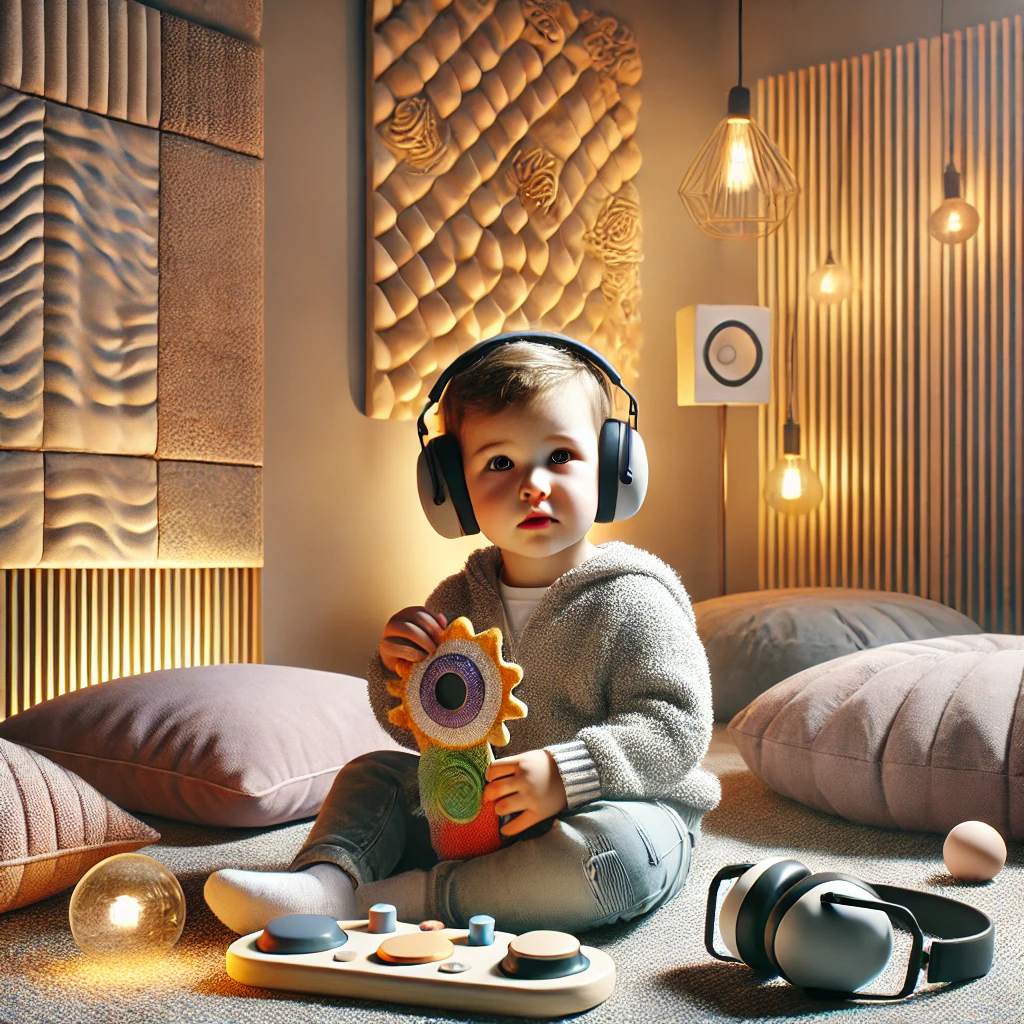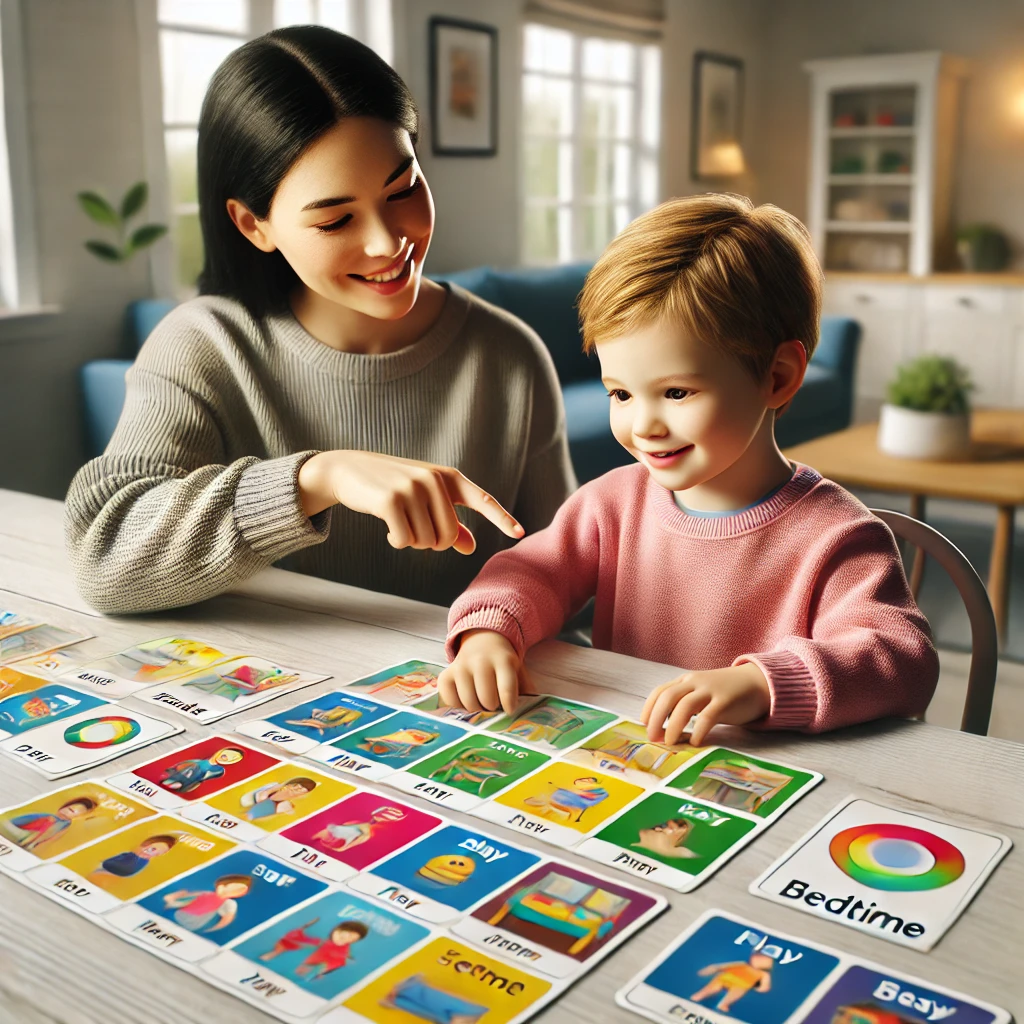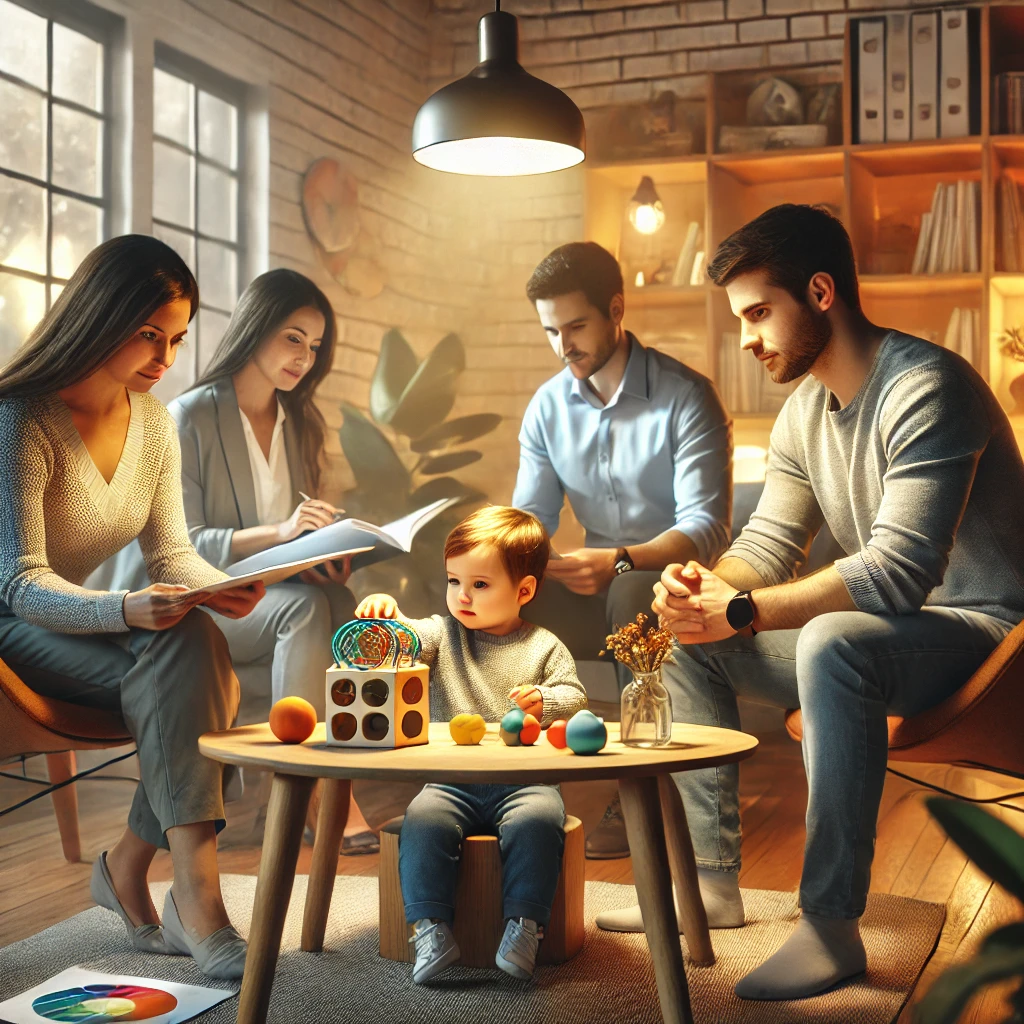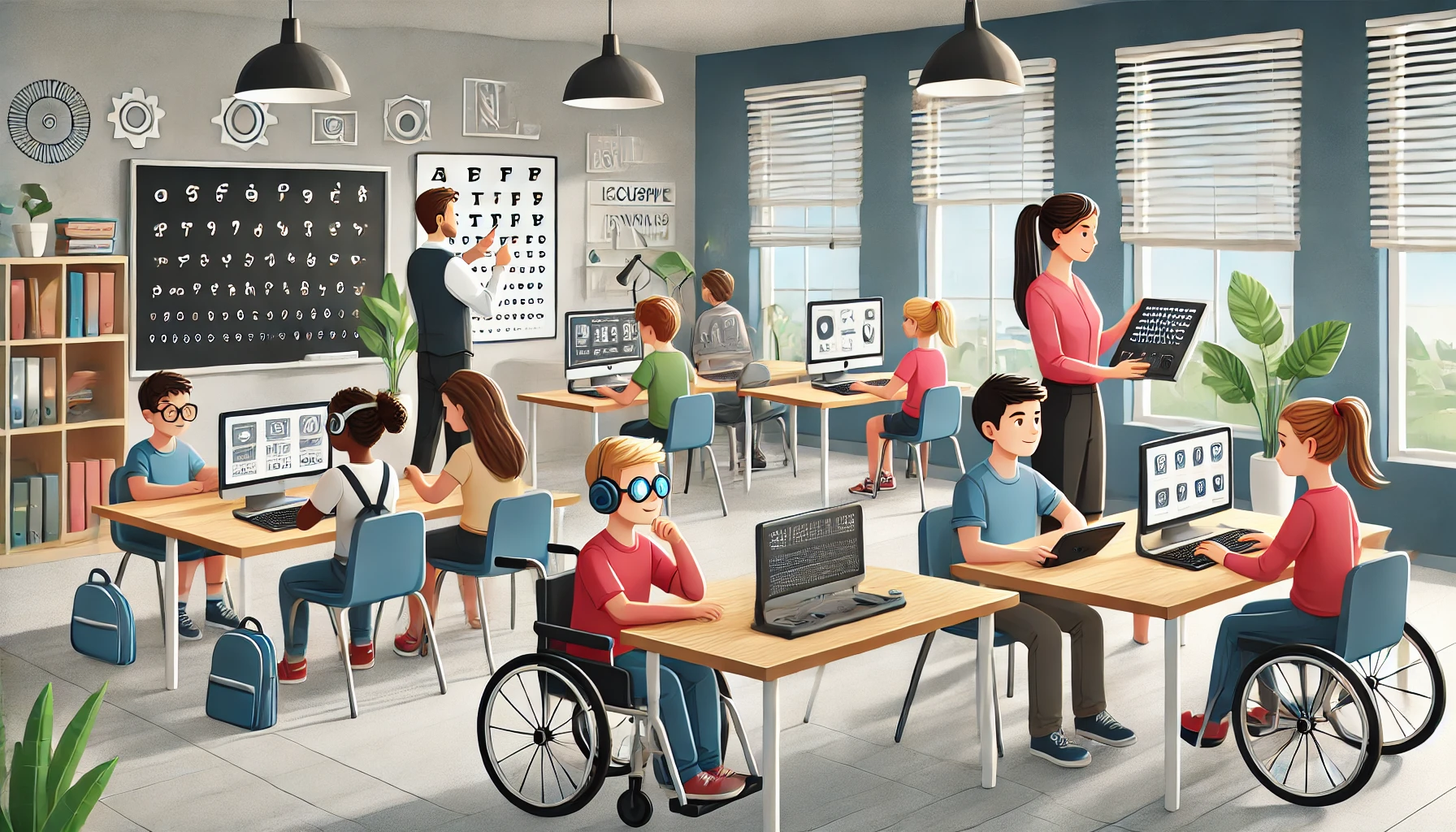Understanding Processing Disorders in Children
If you’ve ever felt like your child has a tough time catching onto things they see or hear, you might be dealing with a processing disorder. It’s that fuzzy connection between their senses and their brain that can make daily stuff a little bumpy. I’m here to help you get a grip on these disorders so you can be the best teammate for your kiddo.
What are Processing Disorders?

Processing disorders are like a bit of static on the brain’s line when it gets information from the world. Kids with these disorders might have their wires crossed when it comes to what they see, hear, or feel, making it harder to develop skills like paying attention or learning new things. Different senses can be in the mix, from what they hear (auditory) to what they see (visual), and even to how they move or feel things around them (tactile and proprioceptive).
Sensory Processing Disorder (SPD) is like the classic case of this. Imagine getting all the sounds or lights in a room at once—some kids might feel overwhelmed, others might not even notice much at all, or they might be on the lookout for more sensory adventures.This makes it big-time important to get what sets your child off and what they crave, so you can have their back with the right approach.
Common Types of Processing Disorders
These disorders aren’t a one-size-fits-all deal; they can show up in various forms and wreak different kinds of havoc on your child’s development. Here’s a lineup of some frequent flyers in the processing disorder arena:
| Type of Processing Disorder | Description |
|---|---|
| Auditory Processing Disorder | It’s a bit like the brain having a bad Wi-Fi connection for sound. Kids might have trouble following instructions, catching the beats in conversation, or telling sounds apart. |
| Visual Processing Disorder | This one’s a hazy signal on the visual front, causing struggles with reading or writing, and even getting a grip on space and distance. |
| Sensory Processing Disorder | More like a traffic jam of senses, kids might either want to dodge too much input or go all in on seeking it out. |
| Motor Planning Disorder | This involves a glitch in crafting and carrying out movement sequences, which might mess with things like neat handwriting or getting dressed without a fuss. |
Spotting these quirks early on is key to helping your child make sense of their sensory world and face the day with more confidence. You can hunt down more tips and tricks for handling specific learning challenges by checking out our write-ups on handling dyslexia and the lowdown on ADHD in class.
Identifying Signs and Symptoms
Being a parent or someone who cares for kids, spotting signs of processing disorders early can make a huge difference. It’s all about getting them the help they need before it gets too tricky.
Behavioural Indicators
You might notice certain behaviours in children with processing disorders that could suggest issues with how they take in sensory info or process thoughts. Keep an eye out for stuff like:
- Struggling to keep attention on tasks
- Being extra sensitive to things like noise, light, or touch
- Acting impulsive or having a tough time self-regulating
- Feeling overwhelmed or having meltdowns when there’s too much sensory stuff going on
Seeing these behaviors can give you a better idea of what your kid is going through and help them cope.
Academic Challenges
School can be a real struggle for kids dealing with processing disorders, affecting how they learn. Some challenges to note are:
| Academic Challenge | Description |
|---|---|
| Reading comprehension issues | Trouble understanding what they read |
| Memory problems | Difficulty remembering info or following instructions |
| Slow pace | Needs extra time for tasks or to respond |
| Organisational struggles | Can’t easily organise thoughts or stuff for projects |
Spotting these learning hurdles can lead to giving your child the right tools and support they need in school.
Social Interaction Difficulties
Social situations can add another layer of difficulty for kids with processing disorders, making it hard for them to connect with others. Here’s what to watch for:
- Trouble reading social cues or body language
- Difficulty starting or keeping a chat going
- Not getting jokes or sarcasm
- Feeling anxious or pulling back in group settings
Recognising these social struggles can help you support their growth and find ways to make connecting with others a bit easier.
By staying tuned into these signs—whether it’s behaviours, learning struggles, or social challenges—you’re taking a big step in supporting your child’s journey. For more tips and resources, check out our supporting children with processing disorders: a parent’s guide.
Nurturing Children with Processing Disorders
If you’re a parent or caregiver of a child dealing with processing disorders, you know the hustle. Setting up the right groove at home, sticking to routines like glue, and backing up your kid with emotional support are the secret sauce.
Creating a Supportive Environment
First thing’s first, your home is your child’s haven, so make it feel that way. Think calm vibes, tidy spaces, and ditch distractions that get in the way. Maybe have a chill zone where your kid can hang out when the world gets a tad too much.
How about some sensory-friendly tweaks around the house? Maybe try out soft lighting, a cozy chair they can sink into, or even some of those nice blues and greens on the walls. It’s all about creating a place where they can feel comfy and safe.
Implementing Structured Routines
Kids with processing disorders? They thrive on routines like a plant on sunlight. Having a clear schedule every day can be a game-changer. Whether it’s visual schedules, colorful charts, or the trusty old timer, keep ’em in the loop about what’s coming next.
When things run like clockwork, there’s less chaos. It makes room for your kid to handle things like a boss. Break down tasks into bite-sized pieces and watch ’em take on the day like pro. And hey, if you need some pointers on how to organize all that, check out our guide visual schedules and routines: implementation guide.
Providing Emotional Support

Let’s talk feelings—kids with processing disorders need to know they can open up. Encourage them to chat about what’s happening in their little world. Throw in a thumbs up, a bear hug, or a “nice job!” whenever you can.
Listen up like it’s the world’s best podcast. Sometimes they might speak in riddles or not at all, but be there anyway. Feeling heard and backed up is like winning the jackpot.
Nailing a nurturing setting, plugging in routines, and dishing out emotional support can do wonders for your child. Keep in mind, every kiddo is one-of-a-kind, so mix and match what works best. Your never-give-up attitude can light up their path to growing into their awesomest selves.
Effective Communication Strategies
When it comes to helping kids with processing disorders, having the right communication tricks up your sleeve can make a world of difference in how they learn and interact. As a parent, being clear with your instructions, using things like pictures and cue cards, and encouraging them to speak up can really boost their development and engagement.
Clear and Concise Instructions
You’ve got to keep it simple when giving instructions to kids with processing disorders. Use easy words, break things down into smaller steps, and pair up your words with visual hints. This straightforward approach allows your child to grasp what needs to be done. Want to know more about handling things like dyslexia? Check out our article understanding dyslexia- early signs and support strategies.
Visual Aids and Cue Cards

You can never go wrong with visual aids and cue cards for kids who struggle with processing what they hear. Try using picture schedules, colorful cards, and other visual tools to support what you’re saying and help ease transitions. These aids offer a solid way for kids to digest information and get through daily routines without a fuss. For more on using visual schedules, peek at our guide on visual schedules and routines: implementation guide.
Encouraging Verbal Expression
Let’s get them talking! It’s super important to help kids with processing disorders find their voice. Create an environment where they feel at ease sharing their thoughts and feelings. Use open-ended questions, listen actively, and toss in lots of praise to encourage them to chat. If your child doesn’t communicate verbally, don’t worry—there are alternative tools to help them share their thoughts. Need more tips on boosting language skills? Swing by our article on language development games for special needs children.
Bringing these communication strategies into your daily chats with your child can set up a positive and nurturing space that fits their specific needs. Hang in there, try various methods, and keep things adaptive to see the best improvements in their communicative abilities and happiness.
Building Stronger Bonds
Being a parent to a child with processing disorders has its unique challenges, but you also have golden opportunities to nurture a solid relationship that supports their growth and happiness. Activities that bring smiles, fostering independence, and reaching out for expert help are your secret weapons in creating a cozy cocoon of care for your child.
Engaging in Positive Activities
Doing fun stuff together is like adding bricks to the bridge between you and your kid. Tailored activities that match your child’s interests can turn everyday moments into unforgettable adventures. You might splash paint on a canvas together, play tag in the backyard, or dive into a board game galore. These activities build trust, amp up your conversations, and carve out cherished memories that could last a lifetime.
Encouraging Independence
Giving your child the reins to little things can supercharge their confidence and set the stage for a relationship rooted in mutual respect. It’s like passing them the baton, showing them you’ve got faith in their abilities. Teach them to nail some life must-knows, like brushing their teeth, packing their bag, or making a buddy. Offering choices can help them figure things out on their own and encourage a bit of creativity.
When your child feels confident to handle things independently, they’re more likely to discover who they are and build some inner grit.
Seeking Professional Support

Life’s not always a walk in the park, especially when navigating the trickier parts of supporting a kiddo with processing disorders. Sometimes, calling in the pros can give a fresh perspective. Therapists, teachers, and medical experts bring extra insight, helpful tips, and plans that can be tailored to fit your child’s puzzle pieces.
The support can come from various avenues, like therapy sessions, special classroom strategies, behavior coaching, or health check-ins. Teaming up with the right folks who get where you’re coming from can help you find the tools needed to enhance your child’s journey.
So, whether you’re making memories with fun activities, building them up to be more independent, or working with professionals, you’re doing wonders to strengthen your bond with them and help create an environment where they feel loved and have space to flourish. Every child is their own little universe, and your job is to find that sweet spot of encouragement and love to help them grow and glow.
Empowering Yourself as a Parent
Being a parent of a child with processing disorders can feel lonely, but looking after yourself while juggling advocacy and building a support network can make the journey smoother and even a bit easier.
Self-Care Strategies
Putting on your own oxygen mask first? Yeah, that. To support your child effectively, you’ve gotta take care of you too. Here are some ways to keep your stress in check and stay balanced in your caregiving role:
| Self-Care Tip | What It Does for You |
|---|---|
| Mindfulness and Meditation | Worked-up? Breathe deep. This can calm those nerves and keep you on the emotional up and up. |
| Physical Exercise | Stretch it out or crank those reps for better health, mood, and the energy of a kid who’s skipped their nap. |
| Seeking Support | Phoning a friend or chatting with a counselor can give your brain a moment to reset and get your head back in the game. |
Advocating for Your Child
Raising your voice (in the best way) to get your kiddo the goods they need is key. By championing their cause, you’re paving a path for their growth and success.
| Advocacy Moves | How It Helps |
|---|---|
| Know Your Stuff | Dig into those special ed laws and demand the goods— services and accommodations—your kid is entitled to. |
| Build a Solid Squad | Link up with teachers, therapists, and pros to brainstorm a plan that hits the nail on the head for your child’s needs. |
| Chat ‘Em Up | Keep lines open with school staff and others, keeping it friendly but firm. Your kid’s needs? Top priority. |
Building Support Networks
Need an assist? Round out your team with people who get it. Having folks in your corner—those who’ve walked the same path—can offer wisdom, encouragement, and solidarity when times get tough.
| Find Your People | Why It Matters |
|---|---|
| Parent Support Groups | Chatting with other parents online or in person can give you tips and laughter when you need it most. |
| Professional Networks | Rubbing elbows with therapists and teachers connects you with cutting-edge info and potential back-up plans for your child. |
Making self-care, advocating, and community-building your trifecta supercharges your ability to help your child with processing disorders. Remember, you’re not flying solo—leaning on others showcases your commitment to your child’s happiness and success.






